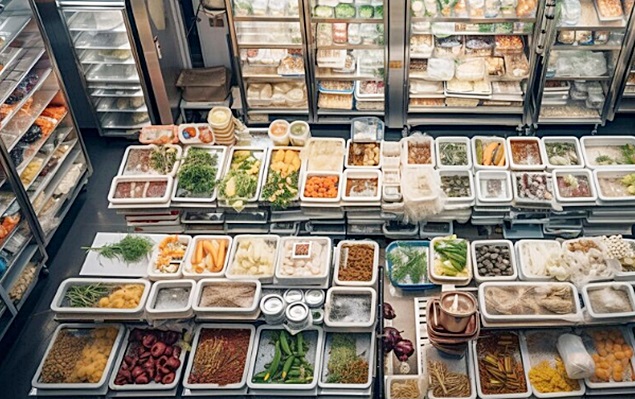
Europe’s Food Retail Market in 2025: Nine Trends Reshaping the Sector
In a context marked by economic uncertainty, accelerated digitalization, and changing consumer behavior, the European food retail market is undergoing profound transformation, notes ESMagazine. Here are the nine key trends shaping this sector in 2025 and beyond:
- Expanding E-commerce
Online food retail continues to gain ground, with projected growth of 49% between 2024 and 2028 across Europe. Countries such as the United Kingdom, Germany, and France are leading the way, while emerging markets are rapidly adopting digital solutions. Click-and-collect services and rapid delivery are becoming industry norms.
- Advanced Personalization Through AI
Artificial intelligence is redefining the shopping experience by enabling retailers to deliver personalized recommendations and tailored promotions. Tesco, for example, uses AI to analyze customer data and optimize offers through its Clubcard program.
- Retail Media: A New Revenue Stream
European retailers are investing in proprietary advertising platforms, transforming themselves into media providers. These initiatives allow for the monetization of customer data and offer brands direct promotional opportunities, generating significant additional revenue.
- Automation and Emerging Technologies
Warehouse automation and IT infrastructure modernization are top priorities for retailers seeking to boost operational efficiency. Investments in technologies such as AI, cloud computing, and omnichannel systems are essential to meet the demands of today’s market.
- Sustainability and Social Responsibility
European consumers are increasingly concerned with the environmental impact of the products they purchase. Retailers are responding with initiatives to reduce carbon emissions, combat food waste, and promote eco-friendly packaging.
- Culinary Experiences and Experiential Dining
Demand for unique culinary experiences is growing, prompting retailers to invest in spaces that offer not just products but also memorable gastronomic moments. This trend reflects consumers’ desire to combine shopping with relaxation and social interaction.
- Growth of the Health-Conscious Segment
Interest in healthy eating is driving increased availability of organic, vegan, and functional foods. Retailers are developing apps that provide nutritional information and personalized recommendations, supporting consumers in their dietary choices.
- Adapting to Inflationary Pressures
Inflation is pushing retailers to adopt strategies such as price freezes on staple goods and expansion of private label offerings. These measures aim to maintain customer loyalty and provide affordable alternatives in the current economic climate.
- Omnichannel Integration
Consumers value the flexibility of switching between online and in-store shopping. Retailers are investing in solutions that seamlessly integrate these channels, delivering a consistent and convenient customer experience.





